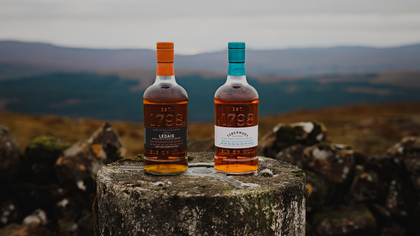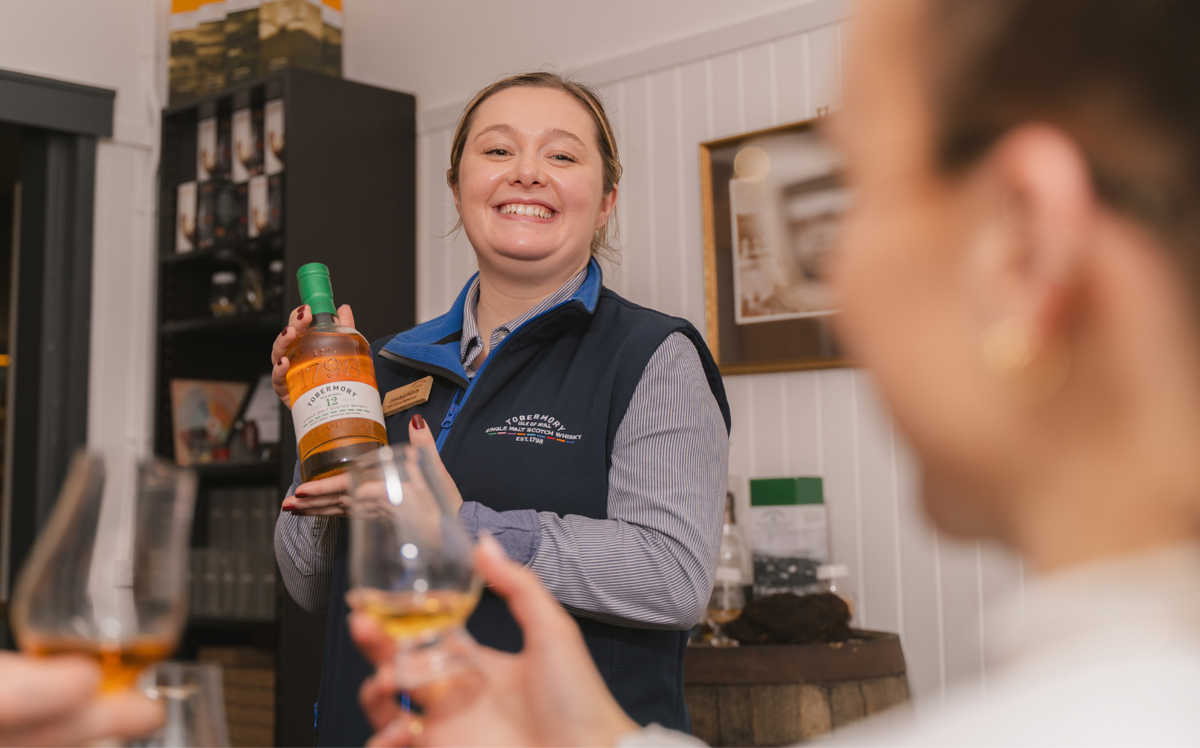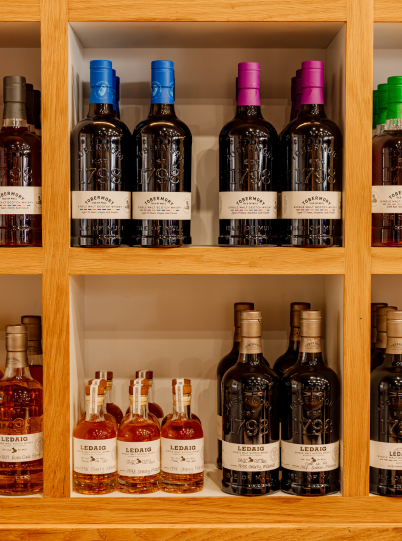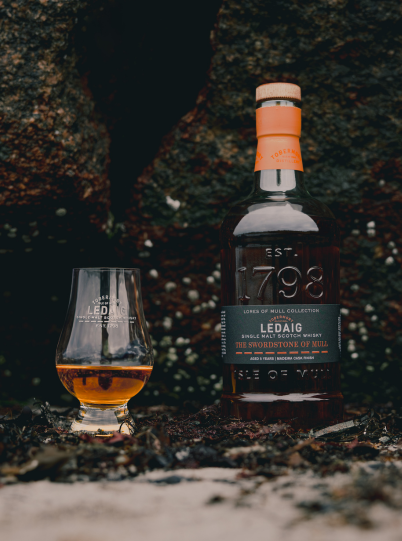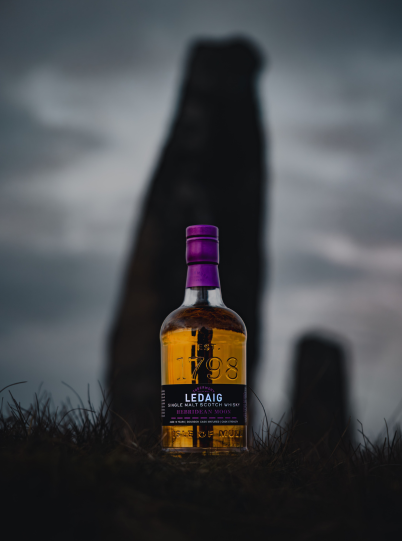Whisky tasting isn’t just about taking a sip. It’s about truly experiencing the craftsmanship, heritage, and complexity behind every drop. Whether you’re a seasoned enthusiast or new to the world of single malts, learning how to taste whisky properly can deepen your appreciation for this iconic spirit and help you uncover the subtle nuances that make each dram unique.
If you’re looking to savour the flavours and stories behind every glass, consider joining us for a whisky distillery tour or tasting at Tobermory. Our expert-led whisky tasting experiences offer insight into how our award-winning single malts are made, along with the chance to taste expressions straight from the source.
How to Prepare for a Whisky Tasting
A successful whisky tasting starts with the right preparation. From your surroundings to your glassware, every detail matters. Whether you're referencing a whisky tasting guide or crafting your own notes, preparation is key.
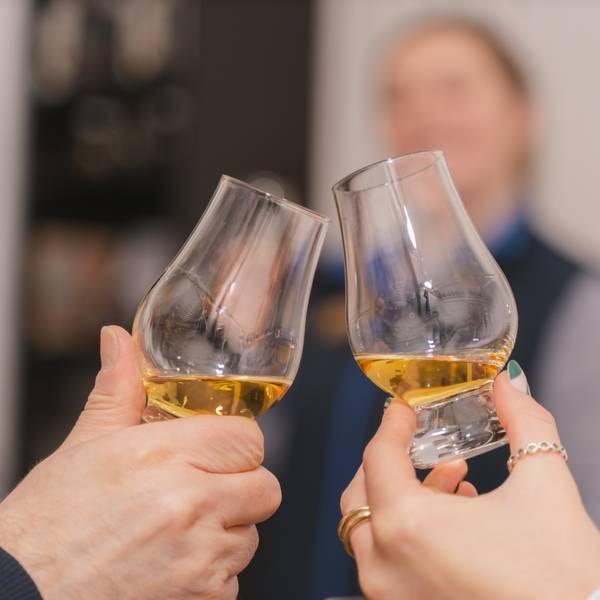
1. CHOOSE THE RIGHT GLASSWARE
The shape of your glass plays a vital role in enhancing your whisky tasting experience. A tulip-shaped glass, such as the widely used Glencairn glass or Copita, helps to funnel the aromas toward your nose while capturing volatile compounds, allowing you to fully engage with the whisky’s nose. Avoid using tumblers or wide-brimmed glasses, as these disperse aromas too quickly and can lessen your ability to detect delicate notes.
2. Set the Perfect Tasting Environment
Create an environment that allows you to focus solely on the whisky. A quiet, neutral space free from strong odours or distractions will help you engage your senses. Good lighting is also essential, enabling you to examine the whisky's colour and clarity. A clean, uncluttered table and comfortable seating will ensure you can take your time and truly immerse yourself in the tasting process.
3. Cleanse Your Palate Before Tasting
To avoid any interference with the whisky’s flavours, cleanse your palate by drinking water beforehand. Avoid consuming strong food, coffee, or minty products just before a tasting, as these can distort your perception. Between tastings, rinse your mouth with still water and consider neutral snacks like oatcakes or crackers.
The Whisky Tasting Process Explained
Mastering the art of whisky tasting involves engaging all your senses, from sight to smell to taste. Here’s how to approach each step like a professional.
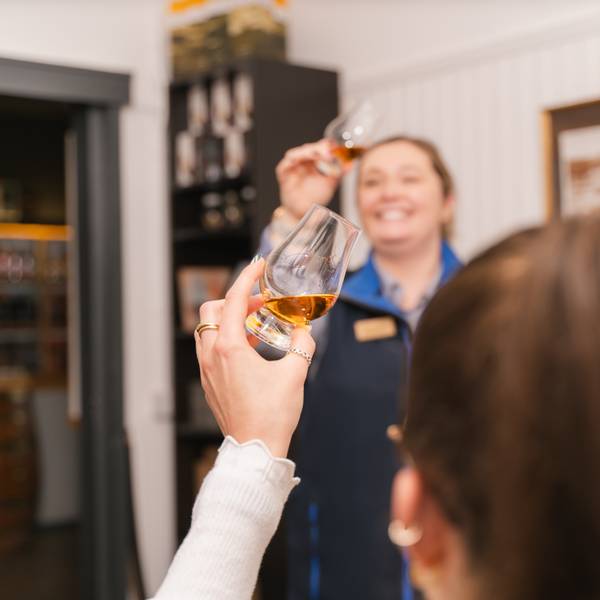
STEP 1 – OBSERVE THE APPEARANCE
Hold your glass up to the light and observe the whisky’s colour. Shades can range from pale straw to deep mahogany, offering clues about its age and the type of cask used in maturation. Swirl the whisky gently and notice the "legs" or "tears" that run down the side of the glass. Slower legs may indicate higher alcohol content or viscosity, providing insight into texture and mouthfeel.
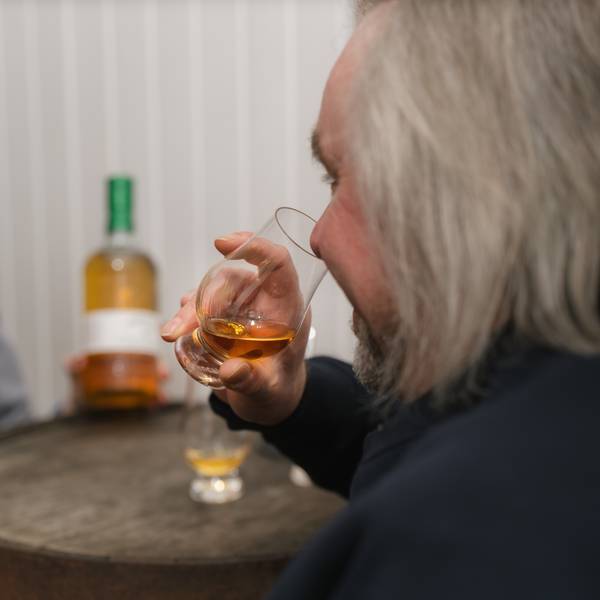
STEP 2 – NOSING THE WHISKY
Bring the glass to your nose and take a series of gentle sniffs with your lips slightly parted. This technique allows the alcohol vapours to dissipate slightly as you breathe, preventing them from overwhelming your sense of smell. It also encourages a more natural inhalation, helping you better detect the layered aromas in the whisky. Try to identify the aroma categories: fruity, floral, smoky, spicy, or woody. Let the scents evolve in layers. Your first impression might be citrus or vanilla but take your time - more complex notes like leather, dried fruit, or even sea spray may reveal themselves as the whisky opens up.
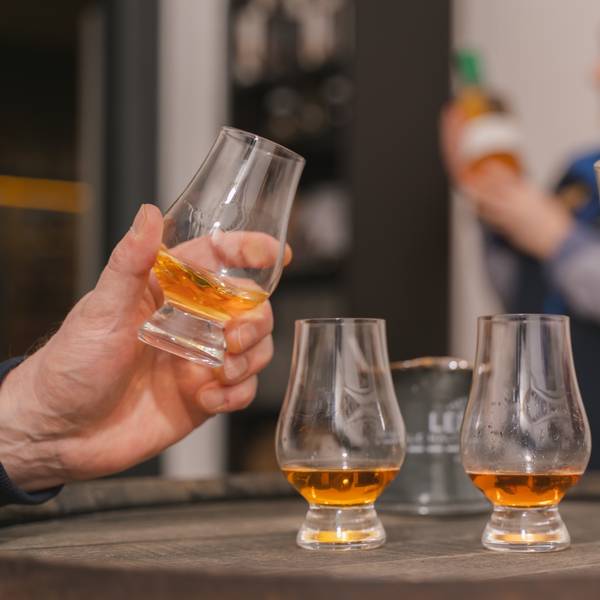
STEP 3 – TASTING THE WHISKY
Take a small sip and let it rest on your tongue. Roll it around to experience the full range of flavours and textures. Is it sweet or savoury? Light or full-bodied? Is there a warming spice, or perhaps a hint of brine? Note how the taste develops. Does it change over time, revealing new flavours? These insights become part of your personal whisky tasting notes.
Step 4 – Assessing the Finish
The finish refers to the flavours that linger after swallowing. A long, smooth finish with evolving notes is a sign of quality. Take note of whether it leaves a warming sensation, a touch of smokiness, or a refreshing citrusy lift.
Understanding Whisky Tasting Notes
Tasting notes help describe what we experience when we nose and sip whisky. Learning to identify and interpret them will deepen your appreciation of the spirit and elevate your single malt whisky tasting skills.
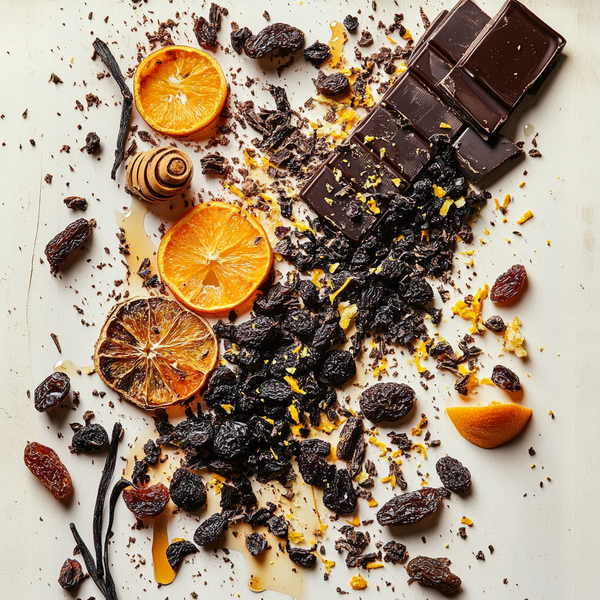
COMMON FLAVOURS & AROMAS IN WHISKY
Each whisky is unique, but there are recurring notes that many drinkers come to recognise. These include:
- Vanilla – Often from American oak barrels.
- Honey – Adds sweetness and roundness.
- Dried fruits – Common in sherry cask-aged whiskies.
- Citrus zest – Provides brightness and acidity.
- Oak and wood spice – Comes from the barrel, adding structure.
- Peat smoke – Associated with peated whiskies like Ledaig.
- Floral hints – Delicate aromas like heather or rose.
- Dark chocolate – Adds richness and depth.
Using a Whisky Tasting Wheel or Chart
A whisky tasting wheel is a valuable visual aid. It categorises flavour groups such as fruity, spicy, woody, or peaty, and breaks them down into specific notes. Using one helps you identify what you're tasting and improves your ability to describe it. Whether you're in a whisky tasting class or enjoying a dram at home, referring to a whisky tasting chart can help you articulate and log your whisky tasting notes more precisely.
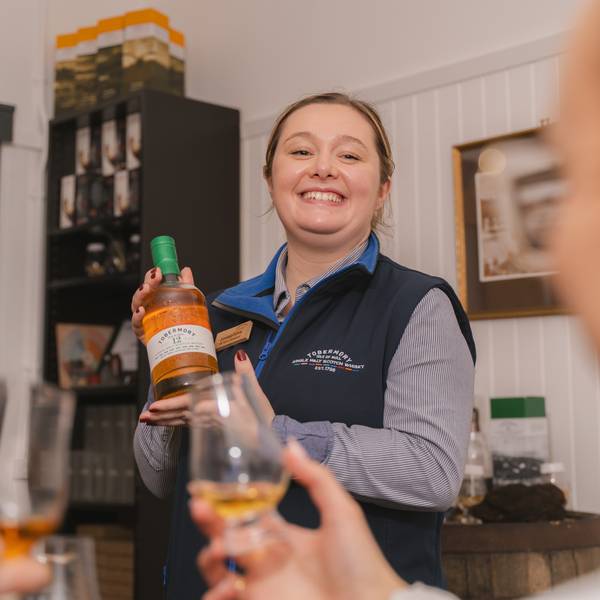
WHISKY TASTING EXPERIENCES & CLASSES
Whisky tasting experiences offer more than just great drinks - they're immersive learning journeys that connect you with the heritage, craftsmanship, and culture of whisky making.
A Tobermory Distillery, we offer a variety of whisky tasting experiences on the Isle of Mull, designed for everyone from curious newcomers to seasoned connoisseurs, including our Tobermory & Ledaig Tasting, Hebridean Series Tasting, Warehouse 1 Tasting where you can taste directly from the cask, and more.
How to Host Your Own Whisky Tasting Event
Organising a whisky tasting at home can be both educational and enjoyable with a bit of planning:
1. Select a Range of Whiskies – Choose whiskies from different regions or styles to compare and contrast flavours. Try mixing peated and unpeated options or a variety of cask finishes.
2. Provide Water and Neutral Snacks – Still water and snacks like oatcakes or unsalted nuts can cleanse the palate between tastings.
3. Use Proper Glassware – Stick with tulip-shaped glasses to enhance aroma and flavour perception.
4. Offer Tasting Wheels and Note Cards – These tools can guide guests in identifying flavours and recording their impressions.
Explore Different Whisky Styles
There’s a whole world of whisky styles to explore:
1. Single Malt Whisky – Made from malted barley at a single distillery, such as Tobermory. Offers purity of style and a strong sense of place. Single malt whisky tasting notes often showcase the unique character of a region and a distillery.
2. Blended Whisky – Combines different malt and grain whiskies from various distilleries for a balanced flavour.
3. Peated Whisky – Infused with smoky, earthy notes from peat-dried barley. Ledaig is a prime example.
4. Cask Strength Whisky – Bottled at the natural strength of the whisky when it was emptied from cask. The closest you can get to tasting whisky directly from cask.
5. Grain Whisky – Lighter and smoother, made from grains like corn or wheat. Often used in blends but can also stand on its own.
Trying a variety of these styles will refine your palate and broaden your whisky knowledge. The more you taste, the more you'll discover what flavours and styles resonate with you.
Whether you’re embarking on your first single malt whisky tasting or hosting a curated event with friends, understanding the nuances behind every dram opens up a world of enjoyment and discovery. For those ready to take their passion further, visiting Tobermory Distillery offers the chance to learn from the masters and taste truly exceptional whiskies in the place they were born.
Explore our whisky tasting experiences or book a distillery tour today and uncover the craft behind every bottle.
Whisky Tasting FAQs
1. What is whisky tasting and why is it important?
Whisky tasting is the process of evaluating the appearance, aroma, flavour, and finish of a whisky. It helps you understand the craftsmanship and character of each dram and enhances your appreciation of different styles, regions, and cask maturations.
2. How do I use a whisky tasting wheel?
A whisky tasting wheel is a visual guide that categorises common aromas and flavours found in whisky. Begin at the centre with broad categories like “fruity” or “spicy,” then work outward to identify specific notes like “green apple” or “clove.” It’s a helpful tool for improving your whisky vocabulary and tasting confidence.
3. What’s the best way to start tasting whisky as a beginner?
Start with a selection of well-balanced, approachable whiskies, preferably single malts with different flavour profiles. Use a Glencairn glass, taste in a quiet environment, and take notes. Don’t rush the process; let your senses guide you and refer to tasting charts to help articulate what you experience.
4. Should I add water to my whisky during a tasting?
Yes, adding a few drops of water can open up the whisky, releasing new aromas and softening strong alcohol notes. This is especially helpful for higher-proof or cask strength whiskies. Experiment to find the balance that works for your palate.
5. What’s the difference between single malt and blended whisky in tasting?
Single malt whisky comes from one distillery and is made from 100% malted barley, often showcasing regional character and distillery style. Blended whisky is a mix of single malts and grain whiskies from various distilleries. Both offer unique tasting experiences worth exploring.
